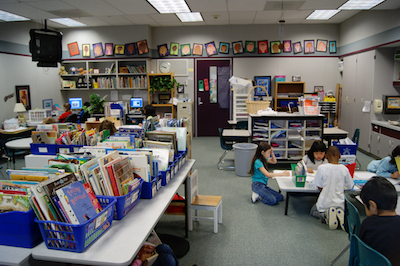The mission was to scope out the classroom of two-year-olds for our daughter who is looking for a new day care. I scanned the room for insights into the teacher, her learning priorities, and the subtle message imparted regarding how children would function in the room. I was curious about how they would spend their hours here, and what would be done to expand their knowledge of the world and grow their love for learning and each other.
My eyes zeroed in on the alphabet. Displayed at toddler eye level, each foot-tall sign held an upper- and lowercase letter . . . in cursive. Perplexing. I couldn't help but wonder why a cursive alphabet was given such prominence. My inference, whether accurate or not, was that the school and teacher might not know what is developmentally appropriate for two-year-olds. It was one small sign among many that we needed to look elsewhere for childcare.
 Similarly, our classrooms send a subliminal message about our belief systems to everyone who enters them. We get only one chance to create a positive first impression, so spending time to create an inviting, age-appropriate learning environment is important. If the visual impression is the first "voice" people hear, we want to make sure it is congruent with what we believe and how we will support learning.
Similarly, our classrooms send a subliminal message about our belief systems to everyone who enters them. We get only one chance to create a positive first impression, so spending time to create an inviting, age-appropriate learning environment is important. If the visual impression is the first "voice" people hear, we want to make sure it is congruent with what we believe and how we will support learning.
Is your classroom saying what you think it is? What is most prominent in your room? Is it the classroom library, the gathering space, or the teacher's desk? What message is the most prominent feature sending to your students and their families?
Let's make design decisions that support learning, inspire collaboration, and foster respect and love for one another. Our world needs it.
This article might be missing links that were included at the time of publication.

